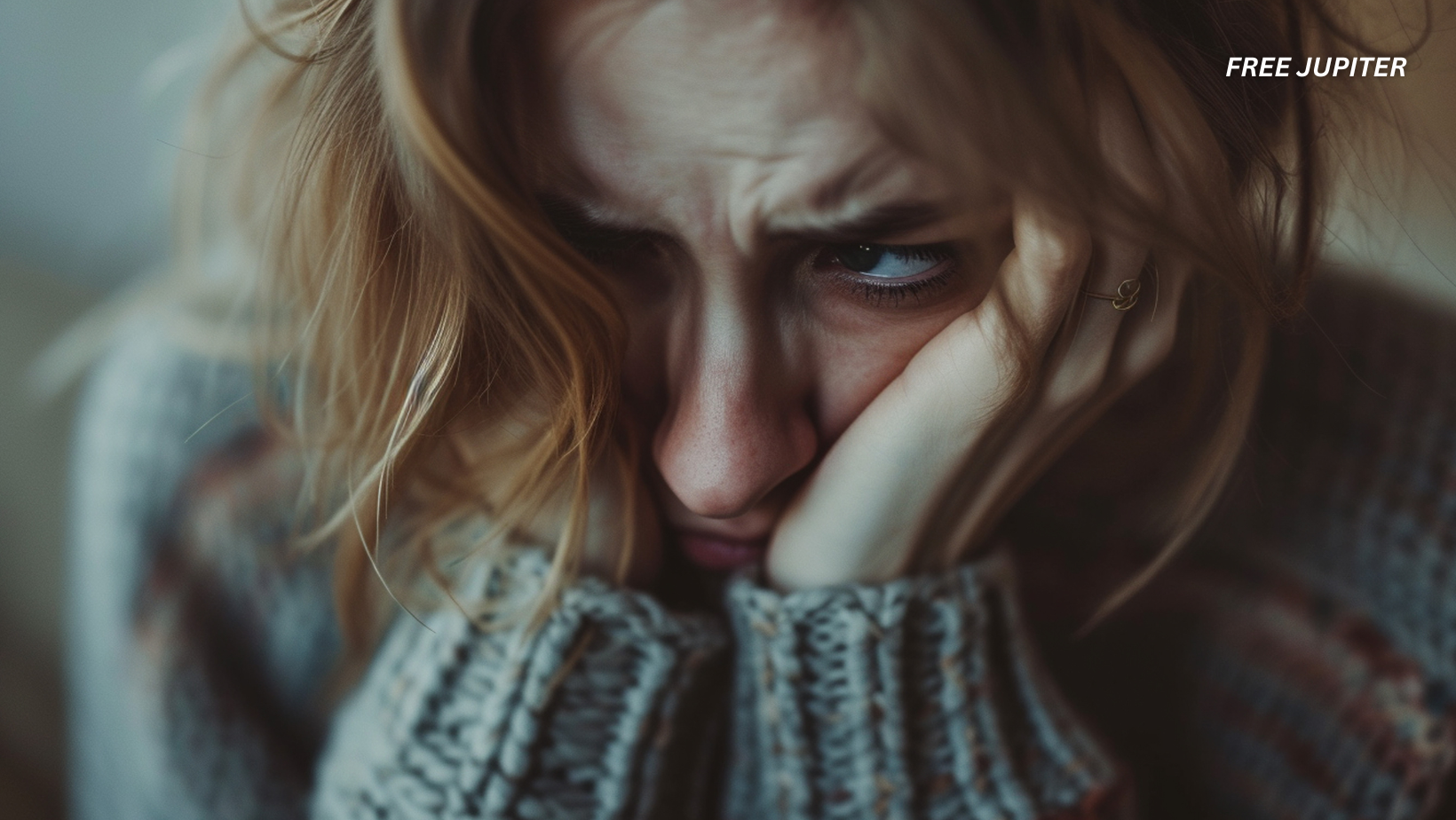Anxiety has often been described as the body’s natural alarm system — a way to keep people alert in the face of danger. Yet when researchers compare the numbers, women consistently report more anxiety than men. This has puzzled experts and fueled stereotypes for generations. Some have dismissed women as “overly emotional,” while others have tried to pin the difference on biology alone. But the truth is far more layered.
Women are not simply “wired” to be more anxious. Their higher levels of reported anxiety can be traced back to centuries of misunderstanding, unique risks, social expectations, and differences in how men and women process stress. Looking at the bigger picture reveals that women’s anxiety is not a flaw — but a reflection of very real challenges and responsibilities.
A Brief History of “Hysteria” and Misdiagnosis
For much of recorded history, women’s mental health was misunderstood and, quite frankly, mocked. Early physicians believed that the uterus could wander through the body, causing distress, seizures, or emotional instability. This bizarre theory led to the infamous label of “hysteria” — derived from the Greek word hystera, meaning uterus.
By the 19th century, “hysteria” became a catch-all diagnosis for women who were anxious, sad, outspoken, or simply defied social norms. Treatments ranged from rest cures to forced institutionalization. Some even claimed that intimacy with men and pregnancy could “cure” mental instability.
Sigmund Freud, though revolutionary in some ways, also carried damaging ideas. He suggested that women’s mental struggles were rooted in envy of men, ignoring the harsh realities many women endured, including trauma and abuse.
It wasn’t until 1980 that “hysterical neurosis” was officially removed from the Diagnostic and Statistical Manual of Mental Disorders (DSM). Yet the shadow of those old stereotypes still lingers in language and culture today.
Read more: Psychologists Say “Tossing” Could Be a Subtle Sign of ADHD. Do You Do It?
The Lingering Labels
Even without the outdated diagnosis, women continue to be branded with labels that undermine their experiences. Words like dramatic, needy, moody, emotional, or crazy cat lady are casually thrown around to dismiss women’s feelings. Popular culture reinforces these ideas, portraying anxious or emotional women as comedic relief, unstable partners, or villains.
This casual labeling has a double effect. It invalidates women’s very real struggles while reinforcing the idea that men are more rational, calm, and collected by nature. But statistics tell a different story.
The Hard Numbers Behind Women’s Anxiety
Research shows that women are about twice as likely as men to be diagnosed with anxiety disorders. But the numbers don’t exist in a vacuum. There are concrete reasons behind them:
- Women are 75% more likely to be physically attacked.
- They are ten times more likely to experience sexual violence.
- Women face greater risks in public spaces, online environments, and even in their own homes.
In this context, anxiety is not irrational. It is a survival response. Living in a world where threats are more frequent naturally sharpens vigilance. Anxiety, in many cases, becomes less about fragility and more about adaptation.
Therapy, Medication, and the Diagnosis Gap
Another factor in the numbers: women are simply more likely to seek help. Studies show that women are twice as likely to attend therapy and twice as likely to consider psychiatric medication compared to men.
This means women’s anxiety is more likely to be recognized, documented, and diagnosed. Men, by contrast, often avoid professional help due to stigma or cultural conditioning that discourages vulnerability. As a result, many men go undiagnosed, masking distress behind behaviors like anger, denial, or substance use.
It’s not that men experience less anxiety — it’s that their struggles are less visible in medical records.
Internalizing vs. Externalizing
The way anxiety is processed also differs. Dr. David Rosmarin, a psychologist at Harvard Medical School, explains that women often internalize anxiety. They may think, “Something is wrong with me.” Men, meanwhile, tend to externalize, thinking, “Something outside of me is the problem.”
This difference shows up across multiple areas of life:
- Education: Male students often blame external factors like an unfair test when they fail, while female students assume they lack intelligence.
- Careers: Men losing jobs may cite office politics, while women may blame themselves and even accept pay cuts in future positions.
- Parenting: Mothers frequently feel responsible for children’s misbehavior, while fathers attribute it to the child’s personality.
Self-blame fuels anxiety, while blame-shifting preserves confidence — at least temporarily.
The Gender Dynamics of Responsibility
This split extends into relationships. In cases of intimate partner violence, men often justify their actions by claiming their partner provoked them. Women, tragically, are more likely to internalize guilt, believing they share responsibility for the abuse.
Such patterns reveal how deeply ingrained responsibility is in women’s lives. When every setback, failure, or conflict is viewed as a personal shortcoming, anxiety naturally follows.
Deflection: A Double-Edged Sword
Men’s tendency to deflect responsibility does offer certain advantages. It allows them to apply for jobs they may not be qualified for, move forward after failures, and maintain higher confidence. This partially explains why men often progress faster in careers, despite taking more risks.
But the downside is significant. A refusal to take accountability can strain relationships, block personal growth, and contribute to what is now described as the “male loneliness epidemic.”
The Male Loneliness Epidemic vs. Women’s Resilience
Today, more men report being single than ever before. Many blame women for having higher standards, rather than examining their own shortcomings. Meanwhile, single women are not just surviving — they are thriving.
Compared to single men, single women are more likely to:
- Own homes
- Earn college degrees
- Build stronger social networks
- Invest wisely
- Report higher overall satisfaction with life
Despite recording higher rates of anxiety, women appear to be managing their lives more effectively.
Read more: Grew Up In A Drama-Filled Family? Here Are The Traits You Develop
The Female Happiness Paradox
This leads to what researchers call the “female happiness paradox.” On paper, women may struggle with more anxiety. Yet they also report stronger fulfillment and richer social lives compared to men.
The paradox lies in the fact that by confronting their struggles — through therapy, self-reflection, and accountability — women are better positioned to create lasting resilience and happiness. Anxiety, in this case, becomes not just a burden but also a catalyst for growth.
The Bigger Picture: Anxiety as Adaptation
When seen in context, women’s higher rates of anxiety aren’t a sign of weakness. They are evidence of adaptation to a world where risks are higher and expectations heavier.
- History burdened women with medical myths that painted them as unstable.
- Society continues to label them with dismissive stereotypes.
- Real dangers make vigilance necessary.
- Cultural pressures encourage self-blame.
And yet, despite it all, women are thriving in education, careers, friendships, and independence.
Raed more: 12 Common Adult Fears That Actually Aren’t New. They Come From Childhood.
Conclusion: Strength in Struggle
Yes, women are more anxious than men — statistically speaking. But behind those numbers lies a story of resilience. Anxiety is not simply a flaw in women’s makeup; it is an understandable response to their circumstances and, in many ways, a driver of their strength.
By acknowledging their struggles instead of burying them, women often achieve greater emotional awareness, stronger relationships, and a deeper sense of satisfaction.
In the end, the higher anxiety rates among women do not tell a story of fragility, but of survival, responsibility, and a relentless pursuit of growth.
Featured image: Freepik.
Friendly Note: FreeJupiter.com shares general information for curious minds. Please fact-check all claims and double-check health info with a qualified professional. 🌱










